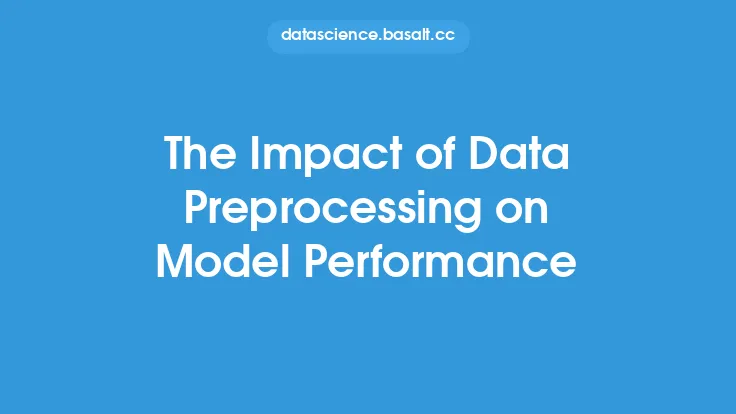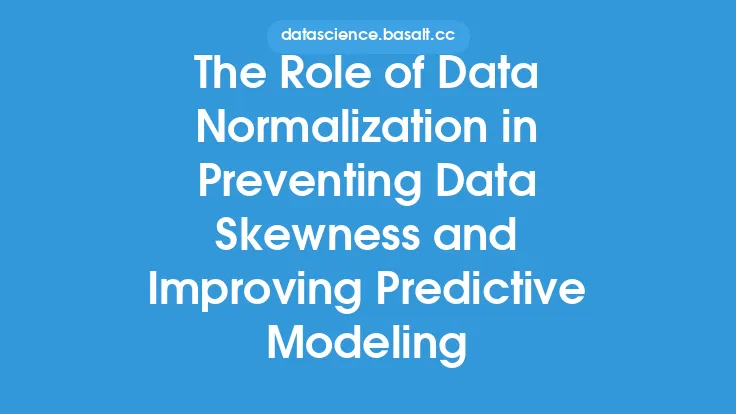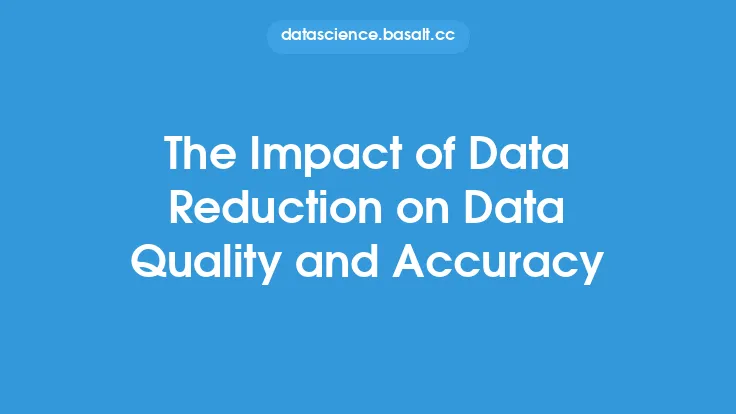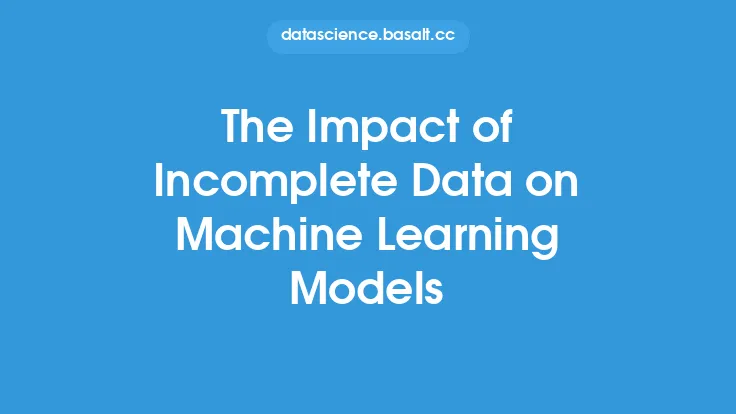Data normalization is a crucial step in the data preprocessing pipeline, and its impact on model interpretability and explainability cannot be overstated. As machine learning models become increasingly complex and pervasive in various industries, the need to understand and explain their decisions has grown exponentially. In this context, data normalization plays a vital role in ensuring that models are not only accurate but also transparent and trustworthy.
Introduction to Model Interpretability and Explainability
Model interpretability and explainability refer to the ability to understand and explain the decisions made by a machine learning model. This involves identifying the relationships between input features and predicted outcomes, as well as understanding how the model weighs and combines different factors to arrive at a decision. Model interpretability is essential in high-stakes applications, such as healthcare, finance, and law, where the consequences of incorrect or biased decisions can be severe. Data normalization is a critical component of model interpretability, as it helps to ensure that the model is trained on data that is consistent, reliable, and free from biases.
The Effects of Data Normalization on Model Interpretability
Data normalization can significantly impact model interpretability by reducing the effects of feature dominance and improving the stability of model coefficients. Feature dominance occurs when one or more features in the dataset have a significantly larger range or scale than the others, which can lead to model coefficients being skewed towards the dominant features. By normalizing the data, feature dominance can be mitigated, and the model can learn to weigh each feature more evenly. Additionally, data normalization can help to improve the stability of model coefficients by reducing the impact of outliers and noisy data. This, in turn, can lead to more reliable and generalizable models.
Techniques for Data Normalization
Several techniques can be used for data normalization, including min-max scaling, z-score normalization, and logarithmic transformation. Min-max scaling involves rescaling the data to a common range, usually between 0 and 1, to prevent feature dominance. Z-score normalization, on the other hand, involves subtracting the mean and dividing by the standard deviation for each feature, which can help to reduce the impact of outliers. Logarithmic transformation can be used to stabilize the variance of the data and make it more suitable for modeling. The choice of normalization technique depends on the specific characteristics of the data and the requirements of the model.
Impact of Data Normalization on Model Explainability
Data normalization can also impact model explainability by providing a more accurate and reliable representation of the relationships between input features and predicted outcomes. By reducing the effects of feature dominance and improving the stability of model coefficients, data normalization can help to identify the most important features driving the model's decisions. This, in turn, can lead to more informative and actionable explanations of the model's behavior. Furthermore, data normalization can facilitate the use of techniques such as partial dependence plots and SHAP values, which can provide detailed insights into the relationships between input features and predicted outcomes.
Challenges and Limitations of Data Normalization
While data normalization is a crucial step in the data preprocessing pipeline, it is not without its challenges and limitations. One of the main challenges is determining the optimal normalization technique for a given dataset and model. Different normalization techniques can have varying effects on the model's performance and interpretability, and the choice of technique depends on the specific characteristics of the data and the requirements of the model. Additionally, data normalization can be sensitive to outliers and noisy data, which can affect the accuracy and reliability of the model. Therefore, it is essential to carefully evaluate the effects of data normalization on the model's performance and interpretability and to consider the potential limitations and challenges.
Best Practices for Data Normalization
To ensure that data normalization is effective in improving model interpretability and explainability, several best practices should be followed. First, the data should be carefully evaluated to determine the optimal normalization technique. This involves understanding the characteristics of the data, including the distribution of values, the presence of outliers, and the relationships between features. Second, the normalization technique should be applied consistently across all features and datasets. This helps to ensure that the model is trained on data that is consistent and reliable. Finally, the effects of data normalization on the model's performance and interpretability should be carefully evaluated, and the normalization technique should be adjusted as needed to optimize the model's performance.
Conclusion
In conclusion, data normalization is a critical component of model interpretability and explainability. By reducing the effects of feature dominance and improving the stability of model coefficients, data normalization can help to ensure that models are accurate, transparent, and trustworthy. While there are challenges and limitations to data normalization, following best practices and carefully evaluating the effects of normalization on the model's performance and interpretability can help to optimize the model's performance and provide more informative and actionable explanations of the model's behavior. As machine learning models continue to play an increasingly important role in various industries, the importance of data normalization in ensuring model interpretability and explainability will only continue to grow.





